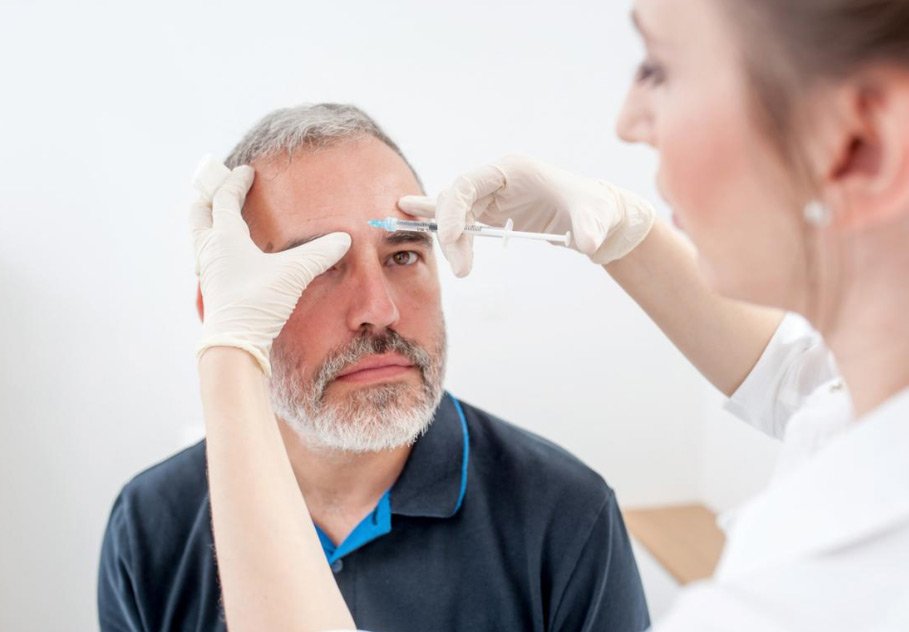
Botox applications are an easy and reliable method used to lighten or eliminate mimic lines that become evident with age. Botox injection provides an indisputable well-being with other systems, especially in the opening of wrinkles, which are the result of using the injection method on the forehead, frown lines, crow’s feet and neck lines. Botox application is an easy process in the form of giving the drug to the muscles with tiny needles.
What is Botox?
A-type botulinum injection (Botox) prevents muscle movements, especially reduces forehead wrinkles, lines around the eyes, mid-brow lines and neck wrinkles and lines. In the process, Botox is injected directly into the muscles with fine needles, allowing the lines to disappear in about 4-7 days and also prevents the formation of new wrinkles.
What problems does it affect?
Botox is used especially in the forehead area, between the eyebrows, between the eyes, upper lip, neck lines, sweating of the hands, feet, armpits and migraine pains that occur due to the movement of the mimic muscles.
Is There Any Swelling in the Area?
Botox is not a filler, so there is no swelling in the area where Botox is applied. As a result of muscle relaxation, there is only a slight change in the treated area.
How is the process implemented?
Botox is an injection procedure. The area to be applied is anesthetized with local anesthetic cream and waited for 20 minutes. After cleaning the area to be applied, small doses are injected intramuscularly with fine-tipped needles. A 10-15 minute session is sufficient for the application.
When Does It Take Effect?
It starts to show its effect on the second day at the earliest. Although it differs from person to person and depending on the drug, its effect generally starts on the fourth day and is completed on the seventh day. Full results are achieved in ten days.
Are There Any Side Effects?
Botox is a drug that has been used for therapeutic purposes for many years. When used for therapeutic purposes, higher doses are administered to the patient. Even in this case, it does not cause damage to any organ in the patients.
What is the Purpose of Botox Procedure?
A drug that disrupts the nerve-to-muscle transmission, that is, does not make the muscle execute the command given by the nerve; therefore, the muscle does not work after the application. Botox is already done for this purpose.
To Whom It Is Applied, Is There an Age Limit?
It is a reliable method that can be applied to anyone between the ages of 18-65 who has unwanted facial expressions, lines or spasms. However, when botox is applied for wrinkles, if the wrinkles are very deep, the lines will not disappear completely, but their depth will decrease. The result is more successful when the lines are made before they get deeper.
For What Purposes Is It Used Apart From Aesthetics?
For What Purposes Is It Used Apart From Aesthetics?
In spastic paralysis; Botox can also be applied in facial paralysis, migraine, strabismus, unwanted muscle movements, headaches and excessive sweating.
Where is it applied in excessive sweating?
Botox reduces sweating. It is applied inside and under the skin so that it reaches the bottom of the hair under the armpit. In sweating applications, the dose is kept a little higher than the application on the face, but it does not harm the health.
Botox Treatment for Clenching Disease
This disease, which is called bruxism in medicine, is popularly known as clenching or grinding teeth. This discomfort, which is generally seen while sleeping, can also occur during the daytime in people under intense stress.
This situation causes serious damage to the oral structure. Symptoms such as sensitivity in the teeth, shaking, fractures, tingling in the gums, pain in the jaw joint, and headache can be seen.
Botox, which is used in many areas, has been used in the treatment of teeth clenching for several years. The problem can be completely eliminated by applying Botox to the chewing muscle. The application takes 5 minutes. The effect starts from the first day and can be repeated after 6 to 9 months, depending on the patient’s condition.
As a result of this procedure, which has been performed in our clinic for 2 years, we observe that the complaint disappears permanently after several repetitions in patients.

